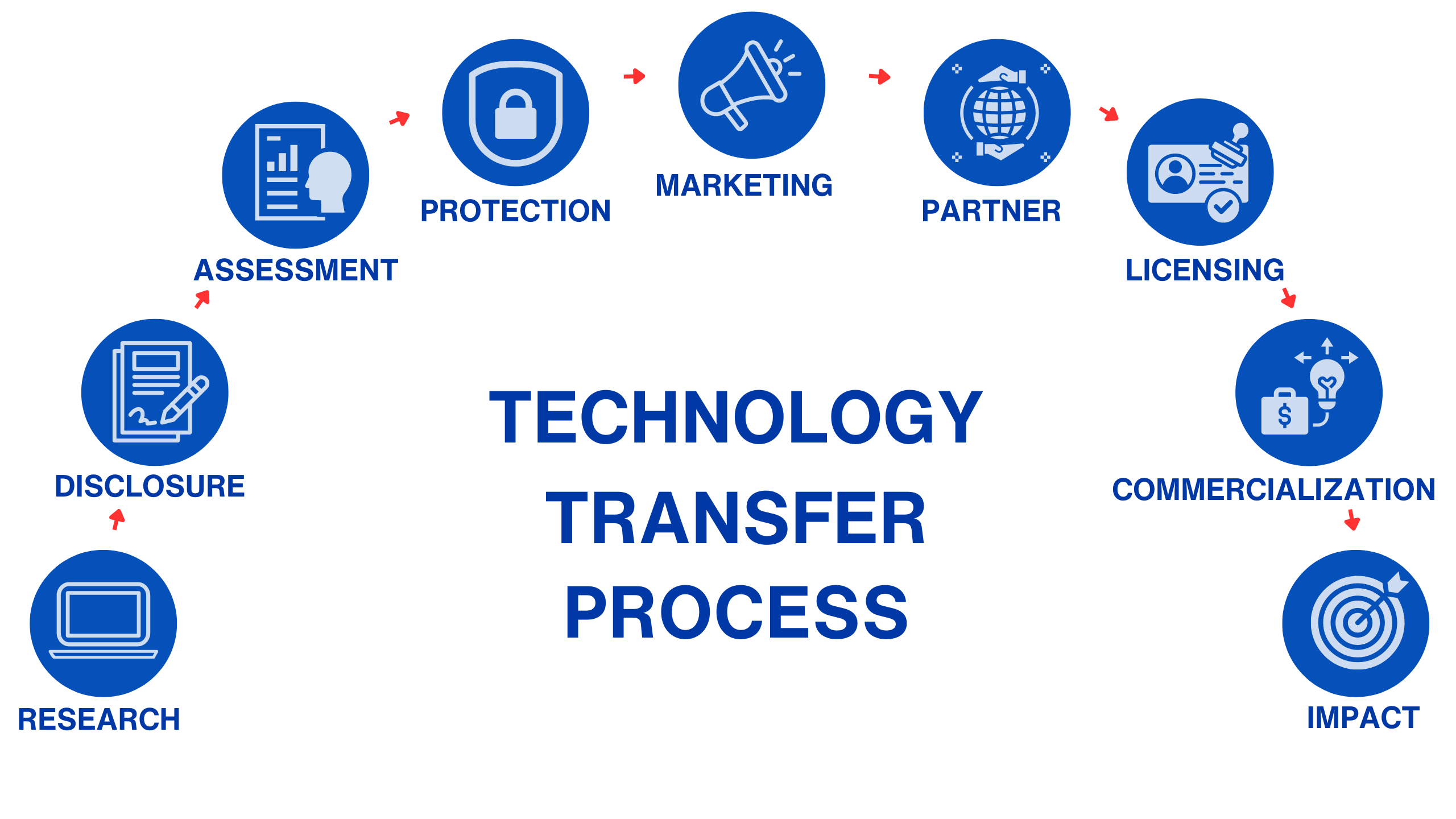Technology transfer process

The process of moving a discovery or innovation from lab to market is exciting and complex. The diagram above provides an overview of the high points along the way. Learn more about each step in the process below.
Tech transfer process details
Our researchers are some of the brightest and most creative minds around. Research conducted at KU and the KU Medical Center often results in the creation of new discoveries or innovations, along with the generation of new knowledge. Those discoveries and innovations positively impact society.
When a researcher believes they’ve identified or created something that could be useful beyond the lab or classroom, we encourage them to let us know by disclosing that innovation to our office. The disclosure form and instructions can be found on the Disclose Your Ideas webpage.
If you’re not sure about disclosing your innovation, please email kuctc@ku.edu to book a consultation with our team to learn more about the process.
We strive to make transparent and informed decisions. Once an innovation is disclosed to our office, our team will work to review what is provided, ask questions and make recommendations about what additional steps may be taken to protect or add value to the innovation. This comes together in an initial review report that is shared back and includes our research into the perceived market, potential competitors and existing intellectual property. It also includes our rationale for the recommended next steps.
If a recommendation is made to pursue intellectual property protection, we will work with researchers and legal counsel to develop a strategy for securing such rights, including applying for a patent, registering a copyright, or other activities which help ensure our interests are preserved.
Our office works to market KU inventions to potential industry partners or others who can help advance its development. Much of this is done using digital platforms such as our website, INPART and the AUTM Innovation Marketplace. The best place to view all the available KU technologies is our Licensing KU Technology webpage.
Partnering happens in many ways, but most commonly either by connecting an innovation to an existing company or by forming a startup company. Our team works to contact companies or other organizations that can take a discovery or innovation to the market. When the next step in developing the innovation is forming a new company, our office supports those entrepreneurial interests and works with partners at the KU Innovation Park, Institute for Advancing Medical Innovations (IAMI), KUMC Center for Health Innovation and others in the KU innovation ecosystem.
Although KU does not directly commercialize innovations, we do license our rights to third parties (existing or new companies) and give those groups the right to develop and sell products based upon the innovation. In return, we receive consideration for those rights, which are shared with our researchers. This transaction occurs through a license agreement that articulates rights and responsibilities of both parties and serves as a framework for further development. We negotiate the terms and conditions of these agreements and then monitor our partners’ performance.
After an innovation is licensed to a partner, the partner takes steps toward commercial development and seeks funding to support those efforts. Although KU does not take an active role in those activities, we do stay in close contact with our partners and make efforts to support their success. These include assisting companies as they seek nondilutive funding (through awards and other seed grants), networking with strategic partners or investors, answering technical questions, and continuing to protect the underlying intellectual property.
We measure success by impacts such as improved outcomes, enhanced processes, economic development, and/or revenue generation. If revenue is generated from commercialization of an innovation by a partner, it will be shared with the creator(s) and others at the university who helped support its success. Details on the sharing of revenue obtained from licensed innovations are described in our Intellectual Property Policy.